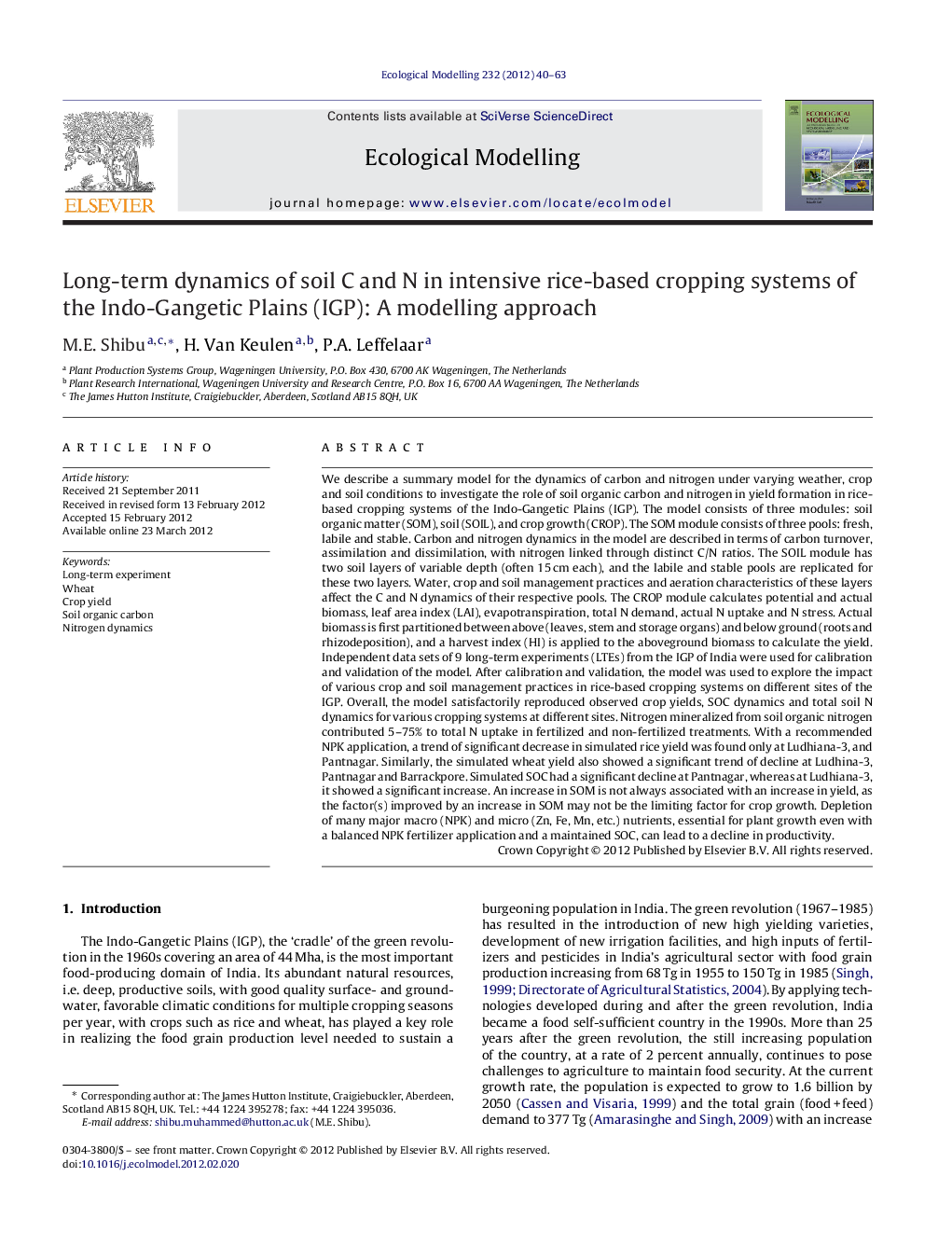| Article ID | Journal | Published Year | Pages | File Type |
|---|---|---|---|---|
| 4376527 | Ecological Modelling | 2012 | 24 Pages |
We describe a summary model for the dynamics of carbon and nitrogen under varying weather, crop and soil conditions to investigate the role of soil organic carbon and nitrogen in yield formation in rice-based cropping systems of the Indo-Gangetic Plains (IGP). The model consists of three modules: soil organic matter (SOM), soil (SOIL), and crop growth (CROP). The SOM module consists of three pools: fresh, labile and stable. Carbon and nitrogen dynamics in the model are described in terms of carbon turnover, assimilation and dissimilation, with nitrogen linked through distinct C/N ratios. The SOIL module has two soil layers of variable depth (often 15 cm each), and the labile and stable pools are replicated for these two layers. Water, crop and soil management practices and aeration characteristics of these layers affect the C and N dynamics of their respective pools. The CROP module calculates potential and actual biomass, leaf area index (LAI), evapotranspiration, total N demand, actual N uptake and N stress. Actual biomass is first partitioned between above (leaves, stem and storage organs) and below ground (roots and rhizodeposition), and a harvest index (HI) is applied to the aboveground biomass to calculate the yield. Independent data sets of 9 long-term experiments (LTEs) from the IGP of India were used for calibration and validation of the model. After calibration and validation, the model was used to explore the impact of various crop and soil management practices in rice-based cropping systems on different sites of the IGP. Overall, the model satisfactorily reproduced observed crop yields, SOC dynamics and total soil N dynamics for various cropping systems at different sites. Nitrogen mineralized from soil organic nitrogen contributed 5–75% to total N uptake in fertilized and non-fertilized treatments. With a recommended NPK application, a trend of significant decrease in simulated rice yield was found only at Ludhiana-3, and Pantnagar. Similarly, the simulated wheat yield also showed a significant trend of decline at Ludhina-3, Pantnagar and Barrackpore. Simulated SOC had a significant decline at Pantnagar, whereas at Ludhiana-3, it showed a significant increase. An increase in SOM is not always associated with an increase in yield, as the factor(s) improved by an increase in SOM may not be the limiting factor for crop growth. Depletion of many major macro (NPK) and micro (Zn, Fe, Mn, etc.) nutrients, essential for plant growth even with a balanced NPK fertilizer application and a maintained SOC, can lead to a decline in productivity.
► A summary model to analyze the relation between SOM and crop productivity in IGP. ► Decline in simulated rice and wheat yields were significant only at a few sites. ► An increase in SOM is not always associated with an increase in yield.
